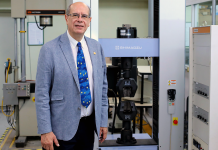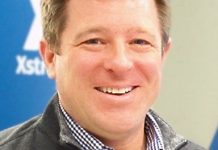
You were recently promoted to Southeast Sales Manager. How does this new position differ from your previous one?
In the last position, I was a regional sales manager. I worked more on growing sales in certain segmented markets, and I reported to a sales manager. Now, there are a lot of the same responsibilities, except I’m overseeing all of sales at our Greenville facility, and I report directly to the president of our Solar Atmospheres Greenville location, Steve Prout.
What’s a typical day like for you at Solar Atmospheres?
The first week I actually spent a lot of time just reviewing everything that’s been going on over the last couple of years since this facility opened. When I’m not traveling, we start our morning off with a meeting with the production team and go through daily workload, and then we start contacting people, and working on our follow-ups and quotes. There are a lot of opportunities in this growing area, so a lot of time is spent prospecting. That’s definitely the main focus: getting the word out that we’re here in the Southeast and turning over every rock, so to speak.
What states do you cover?
Our facility in Greenville covers Florida, North Carolina, South Carolina, Georgia, Louisiana, Alabama, Mississippi, Tennessee, and Arkansas.
What do you hope to bring to the heat-treat industry in your new position?
I’m here to bring continued awareness of Solar’s vacuum processing capabilities in the Southeast. It is a challenge coming into a new market where there are established players. While we may be the new kid on the block in the Southeast, we are well-established innovators in the Northeast and the West Coast, rising to meet the many challenges of 21st century heat-treating.
How do you work with a customer when they come to you with a challenge?
We have a lot of resources at our fingertips at Solar with a research and development team at our corporate facility that includes a Ph.D. scientist and a metallurgist. We make it a team effort to provide solutions to a customer’s problem. Solar excels at new processes, new challenges, doing something different that maybe the ‘other guy’ wouldn’t want to deal with, because of the challenge it may represent, or it is too far out of their comfort zone.
In your 20 years of experience in the heat-treat field, what has changed the most and how have you adapted?
I started off with more traditional heat-treat and continuous furnace experience, and in the original company I was with, we slowly, but surely, incorporated vacuum. That is probably the biggest change I’ve seen: the need for vacuum heat-treating and seeing more and more people getting away from traditional heat-treat, moving toward vacuum. Not that traditional heat-treat doesn’t have its place. But I’ve personally adapted by focusing more time and energy on higher-grade alloys that require vacuum processing. It used to be one or two heat-treaters might have a vacuum furnace in your region. Now, just about every heat-treater seems to have at least one or two vacuum furnaces, and there are more shops that are just vacuum heat-treating only, such as Solar.
What’s caused that increase in need for vacuum furnaces?
It’s just the way that the industries have changed. In my career I have witnessed the growth of medical and aerospace. As those industries have grown so has the increase in higher-value materials and components that lend themselves to vacuum processing. Manufacturing in the United States is just evolving, and with that, heat-treat has evolved.
Where do you see the heat-treat industry in the next five to 10 years and Solar Atmospheres’ place in it?
The industry is still growing. We are seeing more and more need for technologies that used to be integral. Traditional carburizing is no longer always traditional. Now we’re seeing more need for vacuum carburizing, because of the advantages from distortion, and some of the metallurgical properties. I see vacuum nitriding and vacuum carburizing continue to grow, and vacuum high-pressure quenching. It used to be very rare to see anybody with more than 2-bar quenching; now, there are furnaces with 20-bar quenching. Will that continue to grow and replace some traditional oil quench? I don’t know, but I definitely see continued growth in vacuum.
Hopefully in five to 10 years, I’d like to see the Southeast facility with a couple expansions under its belt. I want to experience high growth as this area and region continue to grow.
More info olaratm.com


























